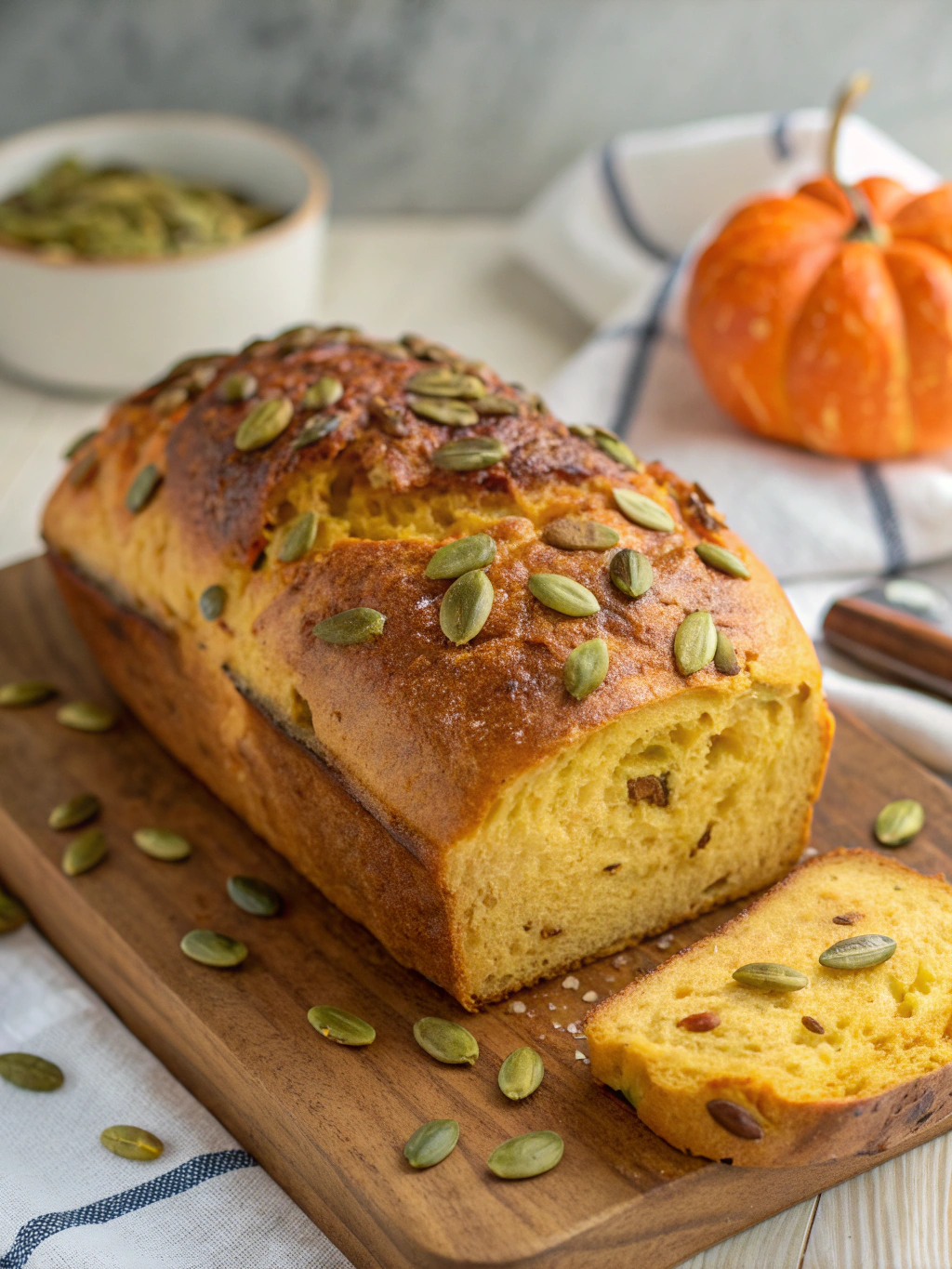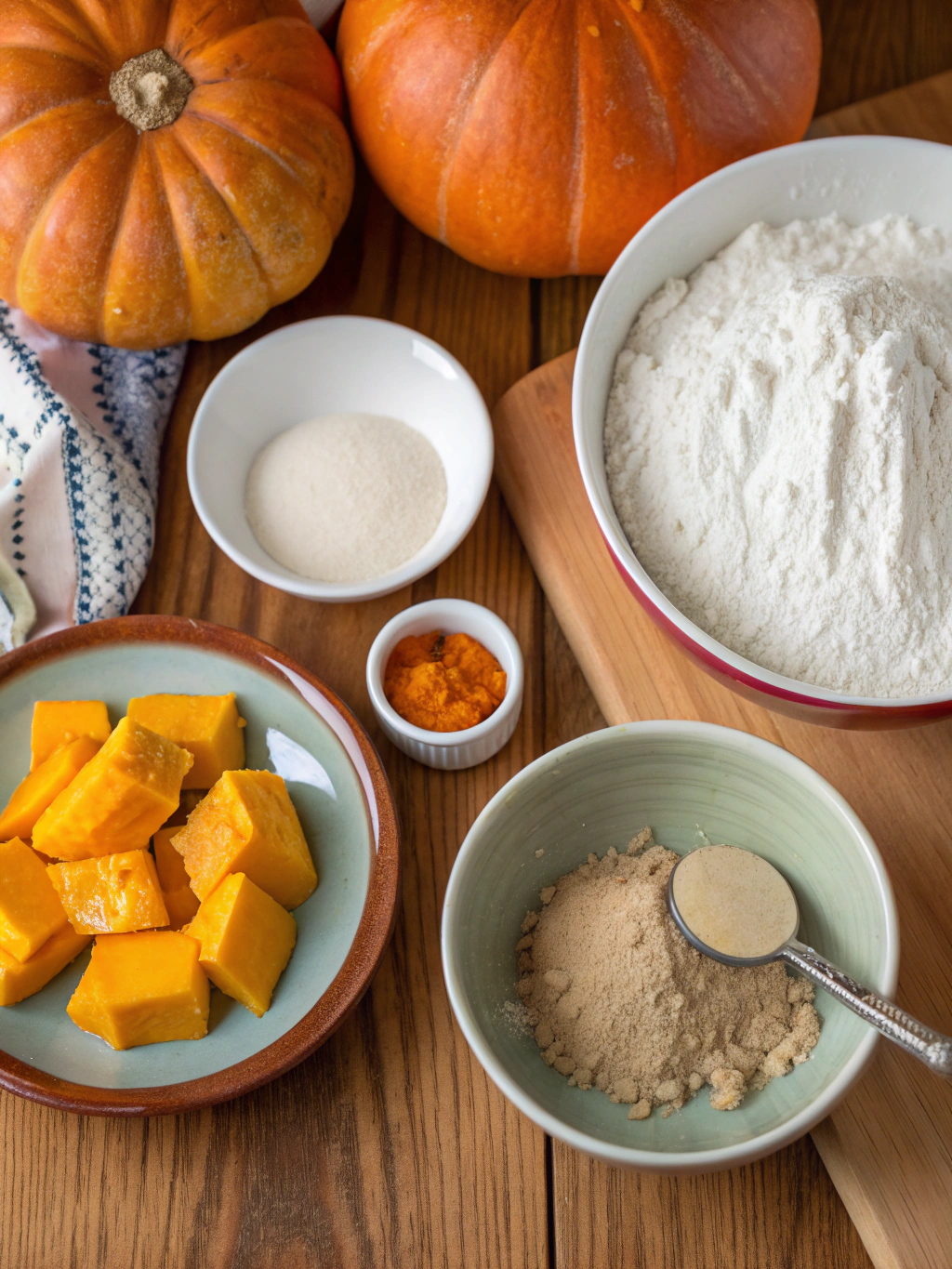Did you know that searches for “soft pumpkin sourdough bread” surge by nearly 50% every September, outpacing even classic pumpkin desserts?
Home bakers are falling in love with artisan loaves that embody the flavors of fall—moist, tangy, and beautifully spiced. While most assume sourdough must be dense or only for experts, this soft pumpkin sourdough bread recipe challenges that belief with a tender crumb, subtle sweetness, and vibrant color that appeals to both seasoned and newbie bakers.
If you crave a bread that envelops your kitchen in the aromas of cinnamon, nutmeg, and pumpkin, read on: this is where tradition, flavor, and easy techniques come together.
Ingredients List
A great loaf starts with thoughtfully chosen ingredients. For this soft pumpkin sourdough bread, here’s what you’ll need for a stunning golden crumb and irresistible flavor:
- 3 ½ cups (420g) bread flour (substitute: half whole wheat for heartier flavor)
- 1 cup (240g) pumpkin purée (fresh or canned; butternut squash purée also works)
- ½ cup (120g) active sourdough starter, bubbly and fed
- 2 tablespoons maple syrup (or honey, for a floral twist)
- 2 teaspoons fine sea salt
- 1 teaspoon ground cinnamon
- ½ teaspoon ground nutmeg
- ¼ teaspoon ground ginger (optional, for warmth)
- ⅔ cup (160ml) warm filtered water
- 2 tablespoons olive oil or melted butter (for extra softness, but optional)
- ½ cup toasted pepitas or walnuts (optional, for crunch)
- For garnish: Rolled oats, pumpkin seeds, or a sprinkle of turbinado sugar
These ingredients compose a loaf that’s plush with moisture, golden with pumpkin, and punctuated by cozy spices. Swap-ins abound: try coconut oil for richness, or reduce maple syrup for a more savory profile.
Timing
Preparation Time: 20 minutes
First Rise (Bulk Fermentation): 5–6 hours at room temperature (can be stretched for flavor)
Second Rise: 1–2 hours
Bake Time: 40–45 minutes
Total Time: About 7–9 hours (mostly hands-off)—that’s 20% less time than many traditional sourdoughs, thanks to the natural pumpkin moisture and a streamlined rise!
Step-by-Step Instructions
1. Mix and Autolyse
In a large bowl, whisk sourdough starter, pumpkin purée, maple syrup, and warm water until just blended. Add flour, cinnamon, nutmeg, ginger, and salt. Stir until a shaggy dough forms. Cover and let rest for 30 minutes—this “autolyse” step lets the flour hydrate for a softer crumb.
Tip: Don’t rush; this rest builds structure before you even knead!
2. Stretch, Fold, and Revitalize
Uncover, drizzle in olive oil (if using). Grab an edge of the dough, stretch upwards, and fold over—repeat 4 times at 30-minute intervals for 2 hours. This easy method aerates your dough, replacing heavy kneading and maximizing softness.
Personalized Advice: If your kitchen’s chilly, let dough rise in the oven with the light on for a consistent, gentle warmth.
3. Bulk Fermentation and Add-ins
Let the dough rest, covered, at room temperature for 4–6 hours, until doubled. If using pepitas or walnuts, fold them in gently after 2 hours, so they’re evenly distributed without deflating the dough.
4. Shape for a Plush Loaf
Turn dough onto a floured surface. With floured hands, shape into a round or oval loaf. Tuck edges under for surface tension, which promotes that bakery-style rise.
Pro Trick: Sprinkle tops with rolled oats or pumpkin seeds for added autumn flair.
5. Proof and Final Rise
Place into a parchment-lined loaf pan or banneton. Cover and let proof 1–2 hours; the dough should look puffed but not over-expanded.
6. Score and Bake
Preheat oven to 450°F (230°C) with a Dutch oven or baking stone inside. Dust the loaf with flour and make a deep slash for expansion. Drop loaf (with parchment) into hot Dutch oven, cover, and bake 20 minutes; uncover and continue baking 20–25 more minutes until deep golden.
Finishing Touch: For a shiny, soft crust, brush with melted butter as soon as it comes out of the oven.
Nutritional Information
A typical slice (1/12 of loaf) provides approximately:
- Calories: 150 kcal
- Protein: 4 g
- Fat: 1.5 g
- Carbs: 30 g
- Fiber: 2 g
- Sugar: 2.5 g
- Vitamin A (from pumpkin): 20% DV
- Low in cholesterol, with minimal saturated fat—making it a heart-friendly option for autumn.
Data comparison shows sourdough’s lower glycemic load versus conventional bread, and pumpkin significantly boosts beta-carotene and potassium levels.
Healthier Alternatives for the Recipe
- Flour: Swap up to half the bread flour for white whole wheat for extra fiber and nutrition.
- Sweetener: Use honey or reduce maple syrup for lower sugar content.
- Fat: Replace olive oil with heart-healthy avocado oil, or go oil-free for lighter texture.
- Plant-based: Substitute vegan butter and omit eggs for dairy-free needs.
- Add-ins: Fold in chia seeds or flax for omega-3 benefits.
Customize spices—add clove or cardamom for variety, or omit nuts for nut-free homes. This flexible base empowers you to match your lifestyle without losing fall flavor.
Serving Suggestions
- Warm with butter: The classic; extra cinnamon sprinkle boosts the cozy factor.
- Toasted with apple butter: A breakfast dream.
- Savory sandwiches: Try with roasted turkey, brie, and crisp greens—delicious for lunch!
- Autumn brunch: Cube and toss into pumpkin French toast casserole.
- With soup: Pair a slice with butternut squash or tomato bisque for ultimate fall comfort.
Personalized Tip: For an indulgent treat, grill slices with a drizzle of maple glaze!
Common Mistakes to Avoid
- Dense Texture: Don’t skip the autolyse or stretch-and-fold steps. They ensure lightness.
- Over-proofing: If dough overexpands, it may collapse in the oven. Proof until just “jiggly.”
- Sticky dough: Pumpkin increases moisture; resist the urge to keep adding flour—a wetter dough bakes up softer.
- Cold Bake: Always preheat oven and baking vessel for a pro-level rise.
- Burnt Bottom: Bake on the middle rack and use parchment to avoid over-browning.
Storing Tips for the Recipe
- Room Temp: Store cooled soft pumpkin sourdough bread in a paper bag inside a bread box for up to 3 days.
- Freezing: Slice and freeze in airtight bags up to 2 months—toast straight from the freezer.
- Advance Prep: Mix the dough, refrigerate overnight (up to 18 hours), then bake fresh the next morning for ultimate flavor and a ready breakfast treat.
Best Practice: Always cool loaf completely before slicing to preserve crumb softness.
Conclusion
Soft pumpkin sourdough bread blends the old-fashioned art of wild fermentation with the irresistible taste of pumpkin spice season. With its tender, airy crumb and golden hue, this bread is destined to become your fall favorite. Whether served at brunch, for sandwiches, or simply toasted with a pat of butter, it’s both easy and rewarding—ideal for every baker. Why not welcome autumn with a loaf, and share your version in the comments? Explore more seasonal recipes and tips on our blog—let’s make fall delicious together!
FAQs
How sour is this soft pumpkin sourdough bread?
This recipe yields a subtly tangy flavor. If you want a more pronounced sour note, extend the first rise.
Can I use canned pumpkin?
Absolutely! Just make sure it’s pure pumpkin purée, not pie filling.
Do I need a Dutch oven?
While a Dutch oven gives the best crust, you can use a baking stone and steam tray for similar effect.
Can this be made gluten-free?
Try a 1:1 gluten-free bread flour; note that rise and texture may vary.
How do I tell when the bread is fully baked?
The loaf should sound hollow when tapped and register 200–205°F (93–96°C) internally.








